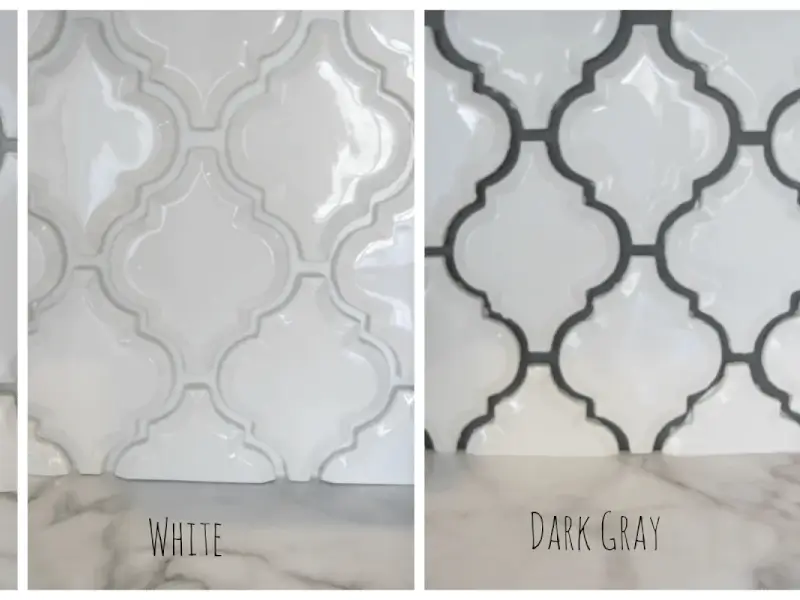How to Choose a Grout Color
When it comes to selecting the perfect grout color for your tiles, the process may seem daunting at first. However, fear not, as there are no strict rules set in stone, but there are some valuable guidelines that can assist you in making a decision you'll be satisfied with. By considering factors such as the desired aesthetic, tile size, and overall design scheme, you can navigate the grout color selection process with confidence, ensuring a cohesive and visually appealing outcome for your tiling project.
Should Grout Color and Tile Color Match?
Contrary to popular belief, it's not necessary to select a grout color that perfectly matches your tile. In fact, achieving an exact match can be challenging due to various factors. When using water-based grouts, the color can be influenced by the amount of water added during mixing, the curing process, and other variables, resulting in slight variations from your expectations.
To find a close match, it's advisable to examine grout samples rather than relying solely on the color depicted on the packaging or the appearance of grout within the package. Urethane and epoxy grouts offer a more consistent coloring effect, providing a reliable option for achieving an even tone throughout your tiled surface. By considering these factors, you can confidently choose a grout color that complements your tile while minimizing the risk of unexpected discrepancies.
Choosing the Ideal Grout Color: Lighter or Darker than the Tile?
Determining whether the grout should be lighter or darker than the tile primarily comes down to personal preference, but it's important to consider the overall effect you wish to achieve in your design. If you have a tile with multiple shades or a variegated pattern, you have several options for grout colors. Opting for lighter hues creates a cohesive and blended look, while darker shades introduce a more dramatic and contrasting effect.
Your choice of shade depends on the specific goals of your design. If you aim to highlight the intricate pattern created by your tile, selecting a contrasting grout color will provide the best results. Conversely, if your intention is to unify the appearance of your tile, such as with a wood look tile floor, choosing a grout color that closely matches the tile, but is slightly lighter, is recommended.
When aiming to emphasize a specific color or accent within your tile, such as the gray veins in a marble tile, opting for a grout color that closely matches or is slightly darker than that particular shade will draw attention to the desired feature.
It's worth noting that grout, especially cement-based grout, can darken over time, particularly in high-traffic areas. If you have concerns about the durability and appearance of your floors under heavy foot traffic, selecting a darker grout color can help conceal potential staining or discoloration.
Exploring the Perfect Grout Color for Subway Tile
When it comes to subway tile, the classic choice involves pairing white tiles with dark grout. However, the realm of home design offers a plethora of possibilities to unleash your creativity. While the white tile with gray grout combination has gained immense popularity, why not break the mold?
Flip the classic style by opting for black subway tiles adorned with white grout for a striking and contemporary look. Alternatively, venture into uncharted territory by selecting brightly colored tiles paired with neutral grout, creating a vibrant and lively ambiance. For a unique twist, pair neutral tiles with boldly colored grout, injecting personality into your space. To truly embrace the adventurous spirit, consider grout options infused with metallic or glitter-like flecks, adding a touch of glamour and sparkle to your subway tile installation.
These colorful combinations with subway tile are particularly sought-after for laundry or kitchen backsplashes, where they can infuse energy and character into the space. Showers also present an excellent opportunity to make a bold statement with your choice of subway tile and grout, elevating the overall aesthetic and creating a captivating focal point.
Unlocking Benefits of Grout Stains and Sealers
If you find yourself dissatisfied with the color of your grout, fret not, as grout stains offer an effective solution. These stains are a fantastic way to even out the color or darken your grout, transforming its appearance to align with your desired aesthetic. Additionally, most grout stains also double as sealers, providing an added layer of protection against discoloration and stains, ensuring the longevity and pristine condition of your grout.
Speaking of sealers, it is imperative to recognize the necessity of sealing all cement-based grout. While epoxy and urethane grouts do not require sealing, cement-based grouts are highly porous and vulnerable to staining caused by spills or regular wear. By applying a sealer, you create a protective barrier that prevents moisture, dirt, and contaminants from seeping into the grout, ultimately safeguarding its integrity and appearance.
Selecting the perfect grout color should ultimately be driven by your personal taste and design preferences. However, incorporating a touch of expert advice can further enhance your decision-making process, allowing you to choose grout colors with confidence and finesse. By combining your individual style with the insights provided, you'll be equipped to make grout color choices like a true connoisseur of design.
